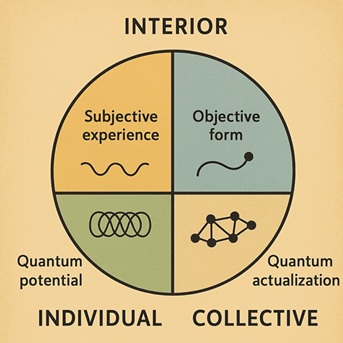|
TRANSLATE THIS ARTICLE
Integral World: Exploring Theories of Everything
An independent forum for a critical discussion of the integral philosophy of Ken Wilber
 Dr. Joseph Dillard is a psychotherapist with over forty year's clinical experience treating individual, couple, and family issues. Dr. Dillard also has extensive experience with pain management and meditation training. The creator of Integral Deep Listening (IDL), Dr. Dillard is the author of over ten books on IDL, dreaming, nightmares, and meditation. He lives in Berlin, Germany. See: integraldeeplistening.com and his YouTube channel. He can be contacted at: [email protected] Dr. Joseph Dillard is a psychotherapist with over forty year's clinical experience treating individual, couple, and family issues. Dr. Dillard also has extensive experience with pain management and meditation training. The creator of Integral Deep Listening (IDL), Dr. Dillard is the author of over ten books on IDL, dreaming, nightmares, and meditation. He lives in Berlin, Germany. See: integraldeeplistening.com and his YouTube channel. He can be contacted at: [email protected]
SEE MORE ESSAYS WRITTEN BY JOSEPH DILLARD
Integral Quadrants in a Quantum ContextJoseph Dillard / AI Ken Wilber's Integral AQAL model, standing for All Quadrants, All Levels, All Lines, All States, All Types, is one of the most ambitious attempts to map the territory between matter and mind, science and spirituality. At its heart lies a simple but profound insight: every event in the universe can be viewed through four fundamental perspectives—interior and exterior, individual and collective.[1] These quadrants—subjective (I), objective (It), intersubjective (We), and interobjective (Its)—are not separate realities but complementary lenses through which the Kosmos reveals itself. When we apply this framework to quantum phenomena, an intriguing pattern emerges. Quantum oscillation, the constant interplay between potentiality (wave) and actualization (particle), resembles the tension between these AQAL poles. The “collapse of the wave function” can be read metaphorically as the movement from interior potential (a field of infinite subjective possibilities) to exterior manifestation (an objective, measurable event).[2] Or, from subjectivity to objectivity. In this sense, the quantum field might be likened to Wilber's nondual ground—that undivided awareness or suchness from which the four quadrants arise as different ways of knowing and being. The oscillation between wave and particle could then be understood not merely as a physical process, but as the fundamental rhythm of the Kosmos: the alternation between emptiness and form, consciousness and expression, subjectivity and objectivity.[3] However, if we take this analogy too literally, we fall again into category error: mistaking epistemology (how we know) for ontology (what exists). The quantum field does not need to “care” about subjectivity or objectivity in any human sense in order to generate reality. The quantum field is highly unlikely to be purposeful or teleologically driven, simply because it would add an unnecessary layer of complexity that would gum up a natural process extraordinarily creative and simplistic. Yet the fact that we perceive this oscillation as meaningful reflects how our cognition, structured by these same quadrantal polarities, interprets the universe through the grammar of its own organization. To illustrate, consider the following correspondences:
This mapping is, of course, metaphorical, but metaphors matter. They are the scaffolding through which consciousness builds bridges between the known and the unknown. The AQAL framework helps us recognize that even the most abstract physical theories are mediated by perspectives, by the observer within the Kosmos who interprets what it perceives. At the quantum level, dualities such as subject/object or wave/particle do not simply dissolve; rather, they interpenetrate. Each exists only in relation to the other, like inhalation and exhalation. The observer and the observed are entangled in a single, self-referential process of knowing.[4] From this standpoint, the collapse of the wave function can be seen as experience randomly expressing, moment by moment, to manifest one side of the oscillation, only to dissolve again into the potential from which it arose. Wilber's integral nondualism invites us to inhabit that oscillation consciously. The goal is not to “resolve” duality into monism or to assert that “everything is consciousness,” but to recognize that every act of knowing participates in the Kosmos' ongoing act of becoming. When we rest in that awareness, the oscillation between adaptation and self-organization ceases to be a conflict; it becomes a creative dialogue, a pulse of evolutionary intelligence that generates both the scientist's equations and the mystic's prayer. In the end, perhaps what thinkers like Einstein, Schrödinger, Bohm, and Wilber, who posit some form of universal a priori consciousness are intuiting, each in their own idiom, is that evolution itself is not a thing, but a verb: a perpetual arising of coherence out of chaos and of chaos out of coherence. The universe, in its most profound sense, may not be “alive” in the way we imagine, nor “conscious” in the way we experience, but it is “dreaming:” oscillating between the potential and the actual, the invisible and the manifest, the subjective and the objective, in an act of emergence. NOTES
Comment Form is loading comments...
|